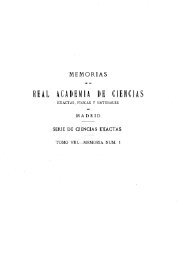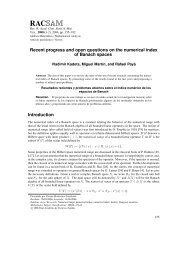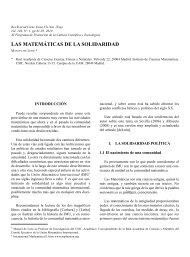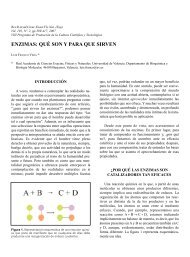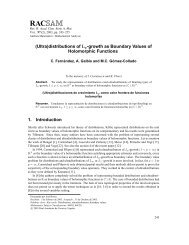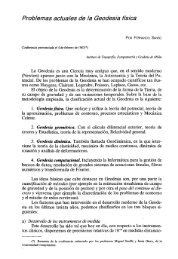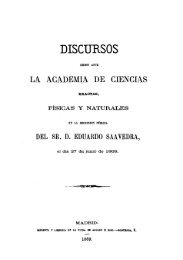The water footprint and virtual water exports of Spanish tomatoes
The water footprint and virtual water exports of Spanish tomatoes
The water footprint and virtual water exports of Spanish tomatoes
- No tags were found...
Create successful ePaper yourself
Turn your PDF publications into a flip-book with our unique Google optimized e-Paper software.
28 THE WATER FOOTPRINT OF TOMATO PRODUCTIONIn all cases the green <strong>water</strong> <strong>footprint</strong> is practically negligible.It should also be noticed that the grey <strong>water</strong> <strong>footprint</strong><strong>of</strong> both Badajoz <strong>and</strong> Almería is similar, even if theproduction is greater in Badajoz. This is related to the higherexcess <strong>of</strong> Nitrogen in Almería, 139 kg N/ha as comparedto 68 kg/ha <strong>of</strong> Badajoz (MARM, 2008) (Appendix IV).However, different green, blue <strong>and</strong> grey <strong>water</strong> <strong>footprint</strong>proportions are found across production regions. In this regard,we see that the main component <strong>of</strong> the <strong>water</strong> <strong>footprint</strong>in Badajoz is the blue one (<strong>of</strong> the open-air irrigated production)whereas in Almería it is the grey one. Something similarhappens in the rest <strong>of</strong> the provinces.If the <strong>water</strong> <strong>footprint</strong> is an indicator <strong>of</strong> the <strong>water</strong> appropriation<strong>of</strong> a product (Hoekstra et al., 2009), its compositionmay help us identify the main areas <strong>of</strong> impact <strong>of</strong> its production.<strong>The</strong> main primary impact <strong>of</strong> the tomato productionin Badajoz, (also in Cáceres or Sevilla) would be the highvolume <strong>of</strong> blue <strong>water</strong> consumed, whereas in Almería (<strong>and</strong>Murcia, Navarra or Granada) would be the pollution <strong>of</strong> <strong>water</strong>resources. It is through this type <strong>of</strong> analysis where the<strong>water</strong> <strong>footprint</strong> reveals itself as a powerful indicator.4. APPARENT WATER PRODUCTIVITY AND VIRTUAL WATEREXPORTS OF TOMATO PRODUCTION4.1. Water apparent productivity <strong>of</strong> tomatoproduction<strong>The</strong> apparent <strong>water</strong> productivity (WAP) is an indicator <strong>of</strong>the economic performance <strong>of</strong> the <strong>water</strong> use. As shown in Tables4 <strong>and</strong> 5 the <strong>water</strong> apparent productivity <strong>of</strong> tomato productionvaried from 0.025 to 36 €/m 3 , depending on the productionsystem, type <strong>of</strong> <strong>water</strong> (green or blue) <strong>and</strong> on the



